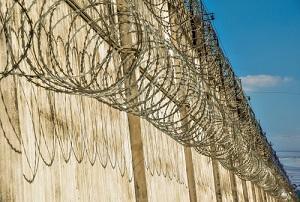New Research Finds High Punishment Rate in Connecticut
 Around the country, crime rates have dropped to their lowest levels in more than 50 years, yet the rate of imprisonment remains much higher than in previous decades. In addition, a new metric—called the punishment rate—has been developed which make the situation seem even more out of proportion. According to a recent study by a prominent research organization, it would seem that the efforts by Connecticut Governor Dannel Malloy to reform the state’s justice system and focus on rehabilitation are needed more than many may have realized.
Around the country, crime rates have dropped to their lowest levels in more than 50 years, yet the rate of imprisonment remains much higher than in previous decades. In addition, a new metric—called the punishment rate—has been developed which make the situation seem even more out of proportion. According to a recent study by a prominent research organization, it would seem that the efforts by Connecticut Governor Dannel Malloy to reform the state’s justice system and focus on rehabilitation are needed more than many may have realized.
Comprehensive Study
The Pew Charitable Trusts recently released a study conducted as a part of its Public Safety Performance Project. The study sought to examine the way in which crime is dealt with across the nation, based on two separate measurements. While, at first glance, the metrics may seem very similar, they are, in fact, quite different. When used together, they paint a very serious picture about the harsh punitive nature of the American criminal justice system.
Imprisonment Rate
The first measurement tracked in the study was the imprisonment rate, a staple in almost any review of criminal statistics. The imprisonment rate simply counts the number of inmates sentenced to at least one year in jail per 100,000 residents in particular state or jurisdiction. Over the last 30 years—the time period on which the researchers were focused—the national imprisonment rate has grown by nearly 150 percent. The imprisonment rate in Connecticut has jumped almost 200 percent since 1983.
Punishment Rate
The second metric was a comparative measure of the imprisonment rate and the “severity-weighted crime rate.” Researchers used seven offenses for which reliable national data is available, including homicide, rape, robbery, aggravated assault, burglary, larceny (theft), and motor vehicle theft, and weighted them according to the typical severity of punishment. When the imprisonment rate was compared with the rate of reported crimes, as established by the study, a new measure was created and dubbed the punishment rate. “This new metric,” according to Pew, “gauges the size of the prison population relative to the frequency and severity of crime reported in each jurisdiction, putting the imprisonment rate in a broader context.” Even as the rate of crime has dropped dramatically since 1991, the punishment rate has continued to soar.
Connecticut Concerns
Based on the study’s calculations, the punishment rate in Connecticut has risen by nearly 320 percent in the last 30 years, the third biggest jump in the country. The national rate grew by about 165 percent. Connecticut currently ranks 13th in the nation for punishment rate and 34th in the rate of imprisonment.
In the minds of many around the state, these numbers highlight the need for criminal justice and sentencing reform, efforts already being spearheaded by Governor Dannel Malloy. His “Second Chance Society” measures have been aimed at reducing the prison population and rehabilitating young offenders before they get caught in cycle and lifestyle of crime. With some “Second Chance” legislation already enacted and more being considered by state lawmakers, proponents hope to see a shift in thinking about crime and punishment in Connecticut.
Charged With a Crime?
If you or a family member is facing criminal charges, it is important to speak to an experienced Hartford criminal defense attorney right away. Call the Woolf & Ross Law Firm, LLC at 860-290-8690 to schedule a confidential consultation today. We will help you understand your options and will work to ensure your rights are fully protected.
Sources:
http://ctmirror.org/2016/03/23/pew-study-tracks-connecticuts-sharp-rise-in-punishment-rate/
http://www.pewtrusts.org/en/research-and-analysis/issue-briefs/2016/03/the-punishment-rate
http://www.nytimes.com/2016/01/04/opinion/connecticuts-second-chance-society.html






